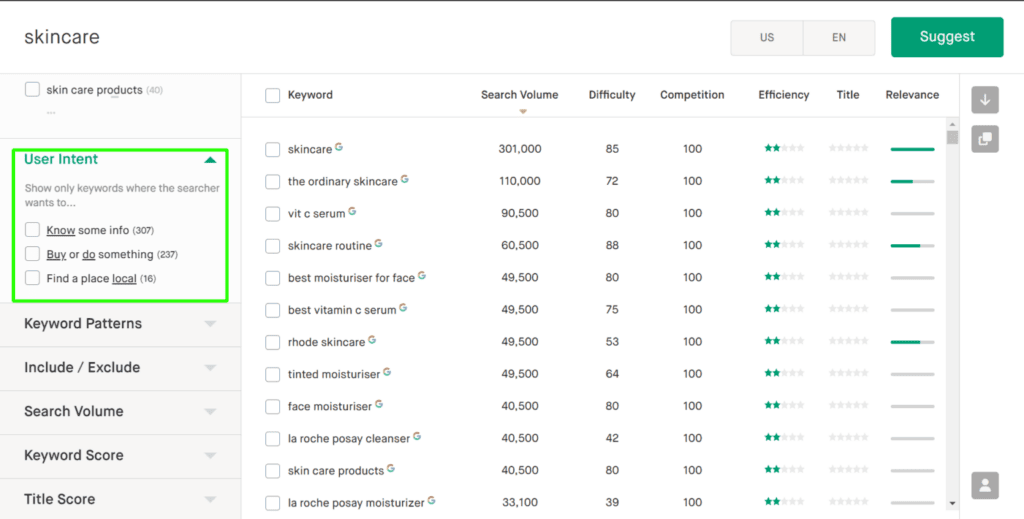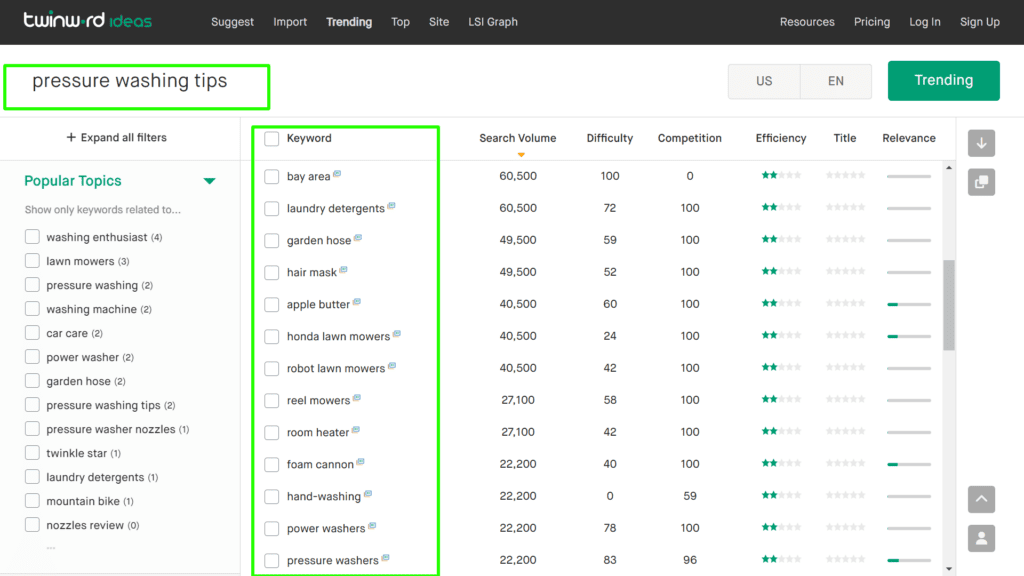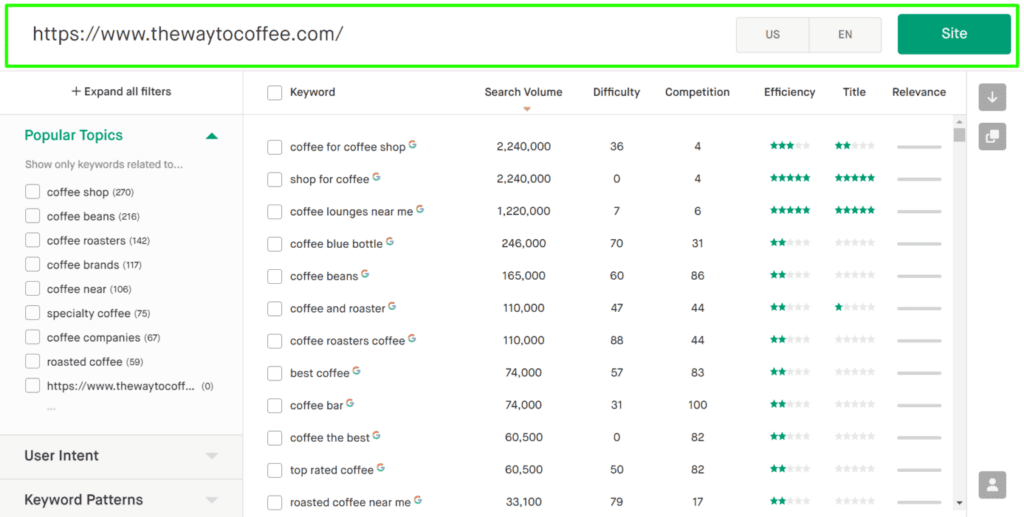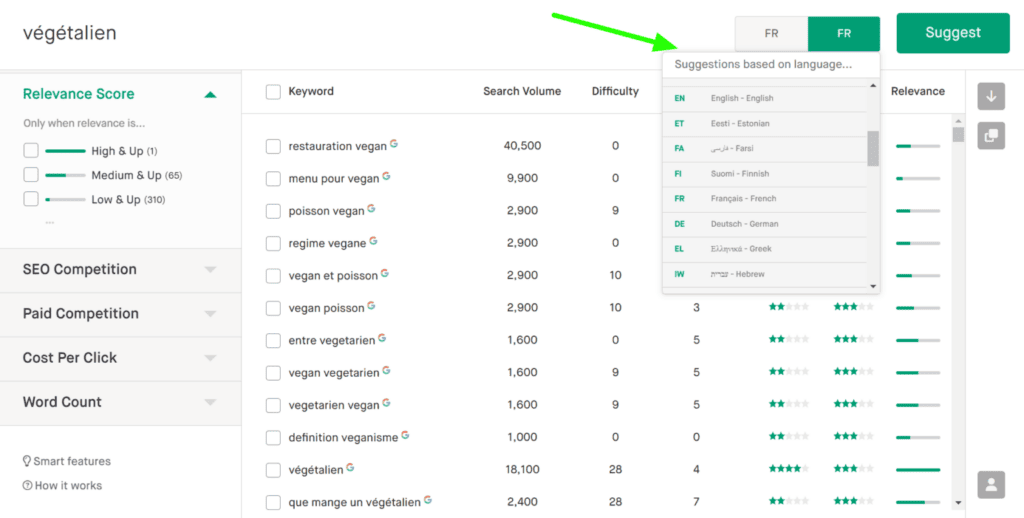
Why is keyword research so critical in content marketing? It’s the key to unlocking content discovery and driving action.
But here’s the limitation – simply conducting keyword research is not sufficient. The real magic happens when you seamlessly integrate these insights into every stage of your content marketing process – from ideation to execution.
This blog post is your comprehensive guide to transforming the use of keyword research in your content marketing strategy.
We’re diving deep beyond the basics, exploring innovative ways to align your content with audience intent, tap into current trends, and position your brand’s voice where it resonates most powerfully.
You’ll learn how to leverage keyword research as a strategic compass, guiding your content toward areas of maximum impact and engagement.
Stay tuned as we unveil the secrets to turning keywords into a roadmap for content success.
4 benefits of leveraging keyword research to guide your content marketing program
From sparking innovative content ideas to enhancing discoverability in the vast digital landscape, let’s explore in more detail how keyword research can be your strategic ally in navigating the competitive world of content marketing.
Generating new content ideas
One of the foremost advantages of keyword research is its role in sparking and shaping content ideation. This practice goes beyond mere analysis of popular search terms; it involves delving into the interests and needs of your audience. Uncovering topics that align with their searches ensures that your content ideas are not random guesses but are informed and aligned with actual audience interests.
Boosting content discovery
Keyword research helps optimize your content to rank higher on search engine results pages (SERPs). Consider a travel blog that uses keyword research to discover that many people are searching for ‘budget-friendly European destinations.’ By incorporating these keywords into their articles, the blog can significantly increase its visibility to users searching for this topic. This enhanced discoverability drives more traffic to your site and increases the chances of your content meeting the right eyes.
Making content approvals data-driven
Gone are the days of guessing what content will work. Keyword research brings a data-driven approach to content approvals. It allows you to validate the potential of content ideas based on real data. This approach ensures that you’re investing resources in creating content with a higher probability of success and relevance.
Avoiding repetition
Lastly, keyword research is invaluable in ensuring the uniqueness of your content. By identifying various angles and subtopics within a broader subject, you can avoid repeating the same content that’s already out there. For example, if you’re writing about ‘digital marketing strategies,’ keyword research might reveal less covered areas like ‘digital marketing for small businesses’ or ‘latest trends in digital advertising.’ This helps you produce content that stands out in the crowded digital space and adds new value to the conversation.
11 practical tips for applying keyword research insights to your content marketing efforts
Leveraging keyword research effectively can elevate your content marketing, ensuring your content is both search-engine friendly and closely aligned with your audience’s interests. Let’s explore practical tips to optimize the use of your keyword insights.
#1 Understand keyword search intent to shape your content angle

A screenshot displaying Twinword’s user intent filter in action, segregating keywords by ‘know,’ ‘buy,’ and ‘local.’
Understanding the intent behind keywords is crucial for shaping the angle of your content. This goes beyond the surface level of what words people are searching for – it’s about delving into why they are searching for these terms.
For example, consider the keyword phrase ‘healthy breakfast ideas.’ The intent behind this search could vary. One user might be looking for quick and easy recipes (informational intent), another might be seeking a cookbook to purchase (transactional intent), and yet another could be searching for a local cafe serving healthy breakfasts (local intent). Understanding these nuances allows you to create content that is not just relevant but also meets the specific needs of each user type.
An advanced tool like Twinword, with its sophisticated user intent filter, can significantly streamline this process. By categorizing keywords according to intent, Twinword helps tailor your content precisely, ensuring it resonates with the desired audience for the right reasons.
#2 Capitalize on trending keywords

Screenshot of Twinword’s Trending keywords tool in action.
In the ever-evolving landscape of content marketing, keeping your finger on the pulse of trending keywords is key to creating relevant and engaging content. These trending terms act as a barometer of what’s capturing the public’s interest at any given moment, guiding you to produce content that aligns with current market dynamics.
Twinword Ideas offers a specialized Trending tool for this purpose. This tool helps you discover and utilize keywords currently in demand, ensuring your content is timely and resonates with emerging trends and interests.
The best part is that by clicking on a specific keyword, you can access related news articles, giving you a comprehensive understanding of the context behind these trends. This thorough approach ensures you’re well-informed before integrating these trending topics into your content calendar.
#3 Organically include keywords in your content
Incorporating keywords into your content is an art that balances visibility with readability. The key is to include them organically, ensuring they enhance rather than detract from your message. Overusing keywords, or ‘keyword stuffing,’ can make the content feel forced and diminish its quality. To understand the nuances of this balance, consider reading our blog on how to avoid keyword stuffing, which provides valuable insights into creating natural, engaging content.
Equally important is the use of secondary keywords. They enrich your content, improve SEO, and help maintain a natural flow.
#4 Tap into competitor content strategy

A screenshot displaying Twinword’s powerful site analysis tool in action.
Gaining insights into your competitors’ content strategies can offer valuable guidance for your own. With Twinword’s Site tool, you can gain a competitive edge by analyzing the keywords for which your competitors rank. This tool allows you to ‘scrape’ the ranking keywords from any competitor’s website, providing you with a clear picture of their SEO strategy. Armed with this information, you can identify content gaps, spot emerging trends and refine your keyword strategy.
#5 Incorporate local language terms

Screenshot showing language and region selectors in Twinword’s advanced keyword tool.
Adapting your content for a global audience goes beyond mere translation – it’s about embedding the subtle linguistic and cultural nuances of local languages. This strategic approach is essential for authentically connecting with diverse audiences.
Twinword Ideas offers an innovative solution to this challenge. Its localization features allow for in-depth keyword research across more than 40 languages, ranging from European languages like French and Spanish to Asian languages like Hindi. The tool also provides insights into over 200 regional variations, enabling a deeper understanding of unique local search patterns.
#6 Target long-tail keywords
Embracing long-tail keywords in your content strategy is a smart move for targeted marketing. These specific, often longer phrases attract a niche audience with precise intent, making them invaluable for tapping into specific intents. With lower competition and higher relevance, long-tail keywords are a gateway to improved search engine rankings and more qualified traffic. They align perfectly with voice search trends, enhancing your content’s reach in the evolving digital landscape. To effectively leverage these keywords, focus on integrating them naturally into high-quality, informative content that directly addresses the user’s specific queries.
#7 Create topic clusters with your keyword data
To elevate your content strategy, turn your keyword research into topic clusters. Choose a broad topic relevant to your brand as the central pillar, then identify subtopics using related keywords. Create detailed content for each subtopic, ensuring it provides value and naturally incorporates the targeted keywords. These subtopic articles should link back to your main pillar content, forming an interconnected network that enhances user navigation and SEO strength. Focus on depth and quality to comprehensively address your audience’s queries, establishing your site as a credible resource.
#8 Use keywords to inform content format choice
To optimize your content’s impact, align the format with the nature of your targeted keywords. Analyze the search queries to determine the best content format. For example, if your keyword research reveals a high volume of how-to queries or questions, developing FAQs or comprehensive how-to guides can be highly effective. For keywords indicating a desire for in-depth understanding, consider creating long-form articles or whitepapers. Keywords with commercial intent might be best served by product comparison guides, reviews, or case studies. When keywords suggest a quick answer is sought, opt for short blog posts or bullet-point lists. Additionally, consider infographics for keywords associated with data-driven topics or trends.
#9 Align keywords with user journey stages
Tailor your content to match the user journey stages using specific keywords. For the awareness stage, use informational keywords in educational content like blog posts or guides, addressing basic queries. In the consideration stage, focus on comparative keywords in detailed reviews or comparison articles. For the decision-making stage, target transactional keywords in content with clear calls-to-action, like product pages or special offers. This strategy ensures your content is relevant and engaging for users at each stage of their journey, enhancing engagement and conversion opportunities.
#10 Optimize for voice search queries
To optimize for voice search, focus on conversational keywords and phrases that reflect how people naturally speak. Begin by identifying long-tail keywords that are phrased as questions or complete sentences, as these are commonly used in voice searches. Incorporate these into your content in a way that sounds natural and conversational. Ensure your content answers these questions directly and succinctly, as voice search results often pull from clear, concise answers.
#11 Monitor business value from your ranking keywords
Achieving top rankings for high-volume keywords is often celebrated in SEO, but the true measure of success lies in their business value.
The focus should be on keywords that generate traffic, spur interest, and lead to action. These terms align closely with your audience’s purchase intent or engagement goals. For instance, a keyword driving thousands of visits is valuable, but its business value is limited if it doesn’t lead to conversions. Instead, prioritize keywords that contribute directly to your business objectives, whether that’s increasing sales, generating leads, or enhancing brand awareness.
Closing thoughts: Make keyword research the foundation for effective content marketing
As we draw this guide to a close, it’s evident that keyword research is not merely a component of content marketing – it’s the foundation. The strategic underpinning ensures your target audience discovers your content where they are in their search journey.
Each aspect of keyword research contributes to a robust, dynamic content marketing strategy, from tapping into the nuances of user intent to exploring the competitive landscape and embracing local language subtleties.
At this juncture, the importance of a tool like Twinword Ideas becomes undeniable.
With its advanced AI-powered capabilities and comprehensive keyword analysis features, it’s not just a tool but a partner in your content marketing journey. Twinword Ideas aids in uncovering the keywords that will drive your content strategy forward, ensuring that your efforts align with search trends and user expectations.
Try out Twinword Ideas for free today!



